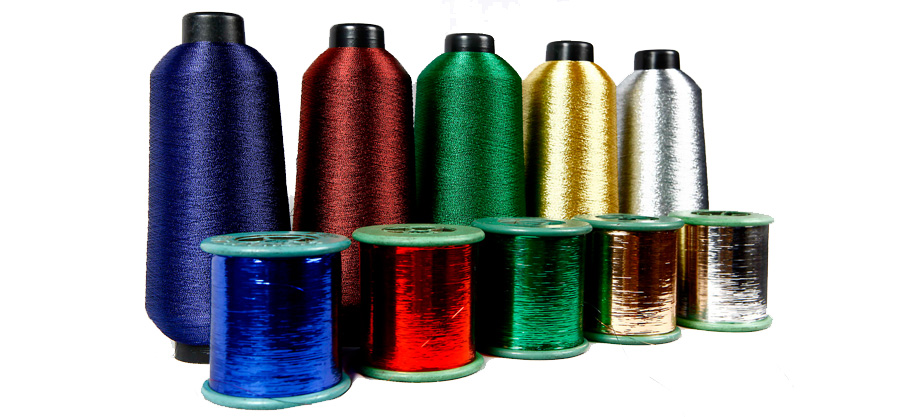Surat zari industry is one of the oldest industries in Surat (Gujarat state in the western part of India) dating back to the sixteenth century. It enjoys the status of cottage industry since 1955. Jari threads is an intermediate product broadly catering to two end-user industries—textiles industry including handicrafts and the fashion industry. It is largely a family-owned, community-based, skilled-oriented, fragmented industry, with a very low level of automation, experiencing intensive rivalry. Zari making involves a series of inter-related closely guarded processes, which are passed on from generation to generation. Some of the issues and challenges that the industry is facing today are related to the traditional mindset of the entrepreneurs, quality, lack of standardization of processes and marketing. The paper discusses the possible strategic interventions as also the cluster approach to enhance the competitiveness of the industry.

History Of Jari Industry
The jari is ancestral Industry and nobody know when the first jari was manufactured and which is its birthplace. from the citation in Vedas, Ramayana, Mahabharat, and Samhitas it can be concluded that it is an ancient industry of India and as there is no mention about it in old books of foreign countries so its birthplace is also India. Read more It is often claimed, India Learned this art of manufacturing jari from Mohamedans but it is not true as there is a mention about Zari cloth in the voyage of Magasthenis and various other western literature. The origin and existence of Jari Industry date back to ancient time but it reached its zenith in the Moghul period, it is believed. In the Medieval period, under the patronage of Moghul Emperors and Princely protection, the industry was well settled and the ad also acquired export market in the west. Surat, at that time known as “CHORASI BUNDER NO VAVTO” was having sea connections with almost all major countries of the world. During the period of Moghul and thereafter, Surat was the largest and important port on the west cost of India. https://www.ganeshjari.com is the Best Zari Manufacturer In Surat . In 1614, The British – East India Company came to Surat, at it was the business, commercial and industrial center on the West coast of India. East India Company first established its factory in Surat. Jari being an article of wear and ornamentation, it was very much liked by the European Community. Thus the port of Surat played a decisive role in the establishment of Jari Industry. Surat at that time was not only famous for its Jari Industry, but also reputed for pure silk cloth popularly known as Gaji Silk, and Mashru, Jewellery, Cotton clothing from surrounding districts. The other handicrafts of Surat were Ivory carving work, Sandalwood engraving work, Brass and other inlay work on wood, Lacquer work etc. In Moghul days, Surat was a prosperous port which was connected by road with Agra having established heavy trade between the two cities. The people from diverting races from various parts of the country were attracted to do business and establish industry and they settled in Surat. Besides from the trading center, the port of Surat was also an important center for jari for pilgrims who visited during to and fro voyages of Haj. The pilgrims were Tanchhoi, Gold borders, Alluring Jari Embroideries, and other various handicrafts. This results in patronage of Haji, Sheikh, and Moghul kings combined to foster classes of artisans and craftsman who turned out beautiful and artistically designed finished product of Silver thread and Gold thread for producing beautiful brocades, borders, and embroideries. Prior to Moghul period exports of jari thread was there but during the Moghul regime and early British rule, it has reached its peak. During this period Surat was popularly known as Jari City. To be on safe side, it can be said 95% of the artisans of the finished products known as raw materials for textile industry are Hindu and that too from only one backward jari community known as RANA. They produced all type of raw material in Jari for use by its other ancillary industry like machine embroidery, hath-are work, machine jari work, Tarkam embroidery, Jardoshi embroidery, hand-loom weaving, jacquard weaving, tanchhoi weaving, jari- malmal weaving, planetary and so on. These ancillary industry situated throughout the whole of India. Every town and village have a small unit carrying on its manufacture activities. All this ancillary industry product are the jari product but while exporting are not classified as Jari kasab product. Like other industries, jari Industry also has faced ups and downs and struggled to survive. primitive manufacture remained as Hindu Origin and other ancillary industries were developed and mastered by various sect including Hindu, Muslim, Parsi, Christian, Sikh…. The Government desires to give protection to this industry but due to secrecy nature of the industry, the artisans do not help the desire to be materialized. On the other hand, the Government is giving promotion to exports by allowing drawback on copper content in Jari. At other State and Central Government is collecting heavy tax on raw materials and intermediates used by the Industry. The Government should consider a refund of this also like drawback so as to enable exporter of our country to stand in the cut-throat competition in the International Market.